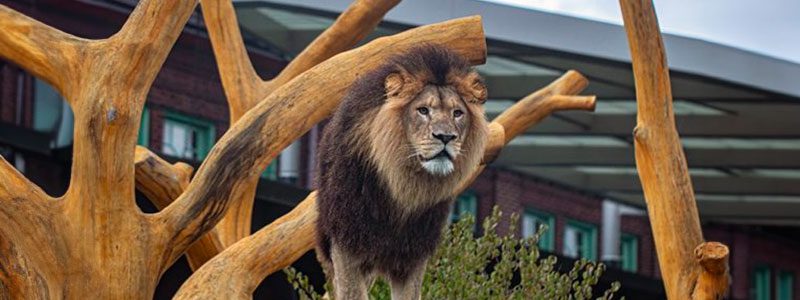Welcome to Lincoln Park Zoo’s new web app! Share your feedback

Domestic Cattle
Farm-in-the-Zoo
The Farm in the Zoo is open 8 a.m.-4:30 p.m. everyday.
Did You Know?
- Three heritage cattle breeds reside at Lincoln Park Zoo. These historic breeds have traits that predate widespread agriculture but were not bred to maximize production.
- Cattle are ruminants, so they chew their cud (regurgitated food) as part of the digestive process.
- There is no generic singular word for “cattle,” although females who are given birth are called “cows,” while those that have not are called “heifers.” Neutered males are “steers,” and other males are “bulls.”
Don’t See the Animals?
Why aren’t animals visible at all times? To promote positive animal welfare, we provide animals with choices. They can choose to spend time in areas that are out of public view.

Take an Animal Home with You
Overview
Scientific Name: Bos taurus taurus
Class: Mammals
Diet: Grass, fodder (agricultural crops like corn, hay, and legumes used to feed livestock)
Range: First domesticated in West Asia
Endangered Status: Not Listed
More Information
Cattle were first domesticated around 8,000 years ago from aurochs. They have been bred for milk meat, leather, fertilizer, and other items. In general, they are between 3–3.5 feet at the shoulder and can weigh up to 2,200 pounds, although coloration and size vary from breed to breed. Females reach maturity at around 18 months and can remain fertile for 12 years.
Lincoln Park Zoo is home to three types.
Shorthorn cattle are one of the oldest established breeds from the 18th century and are split into beef and milking types. They are docile, and female shorthorns are good mothers. This breed is listed as Critical on the Livestock Conservancy’s Conservation Priority List.
Dutch belted cattle date back to Netherlands in the 1600s. They have a white “belt” around their midsection and a black or brown front and rear, with curved horns. This breed lives a long time and produces milk efficiently. This breed is also listed as Critical.
Dexter cattle originated in southern Ireland in the 1800s. They are one of the smallest breeds and tend to be black, brown, or red, with horns that have black tips. They are docile, intelligent, maternal, and full of personality. This breed is Recovering on the Livestock Conservancy’s list.
